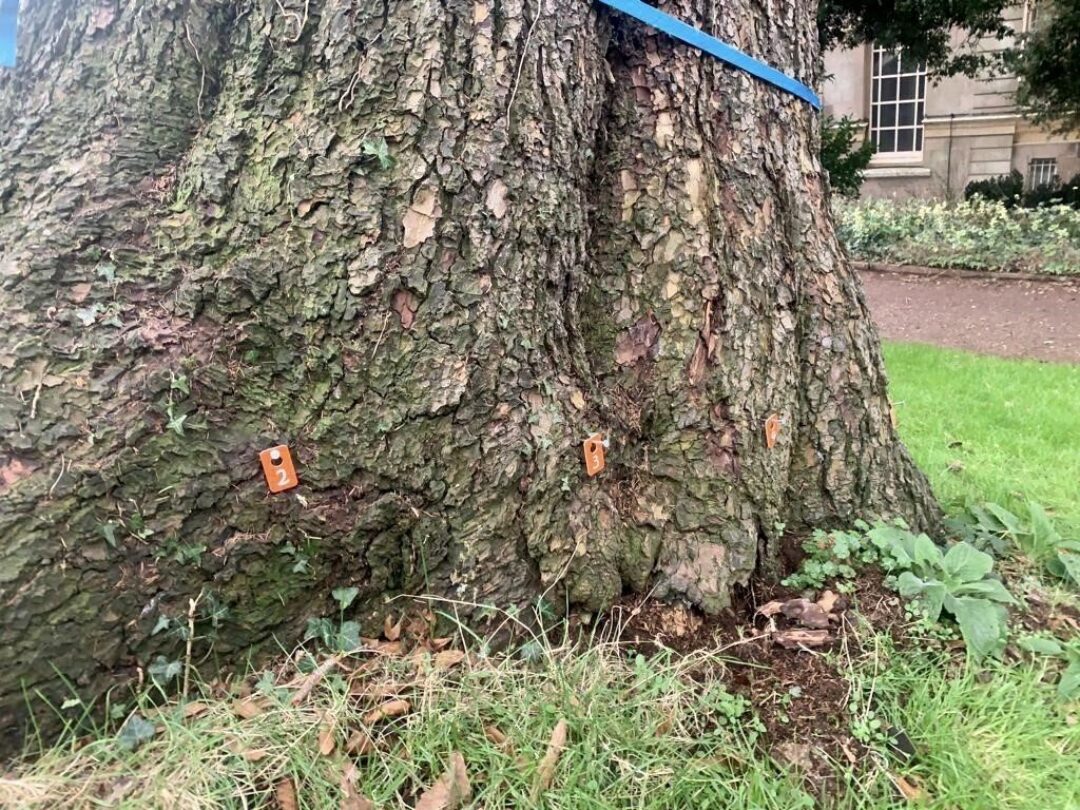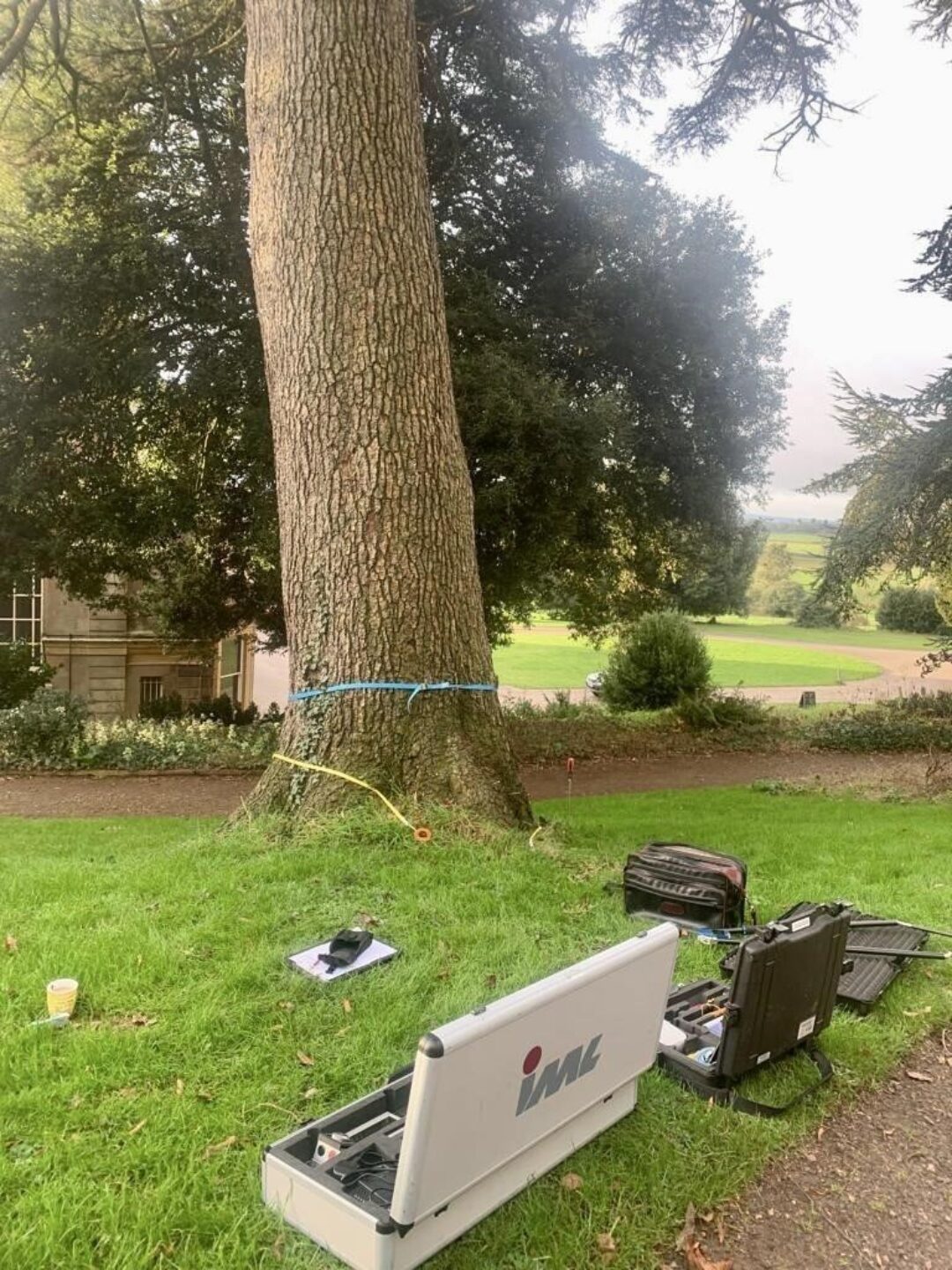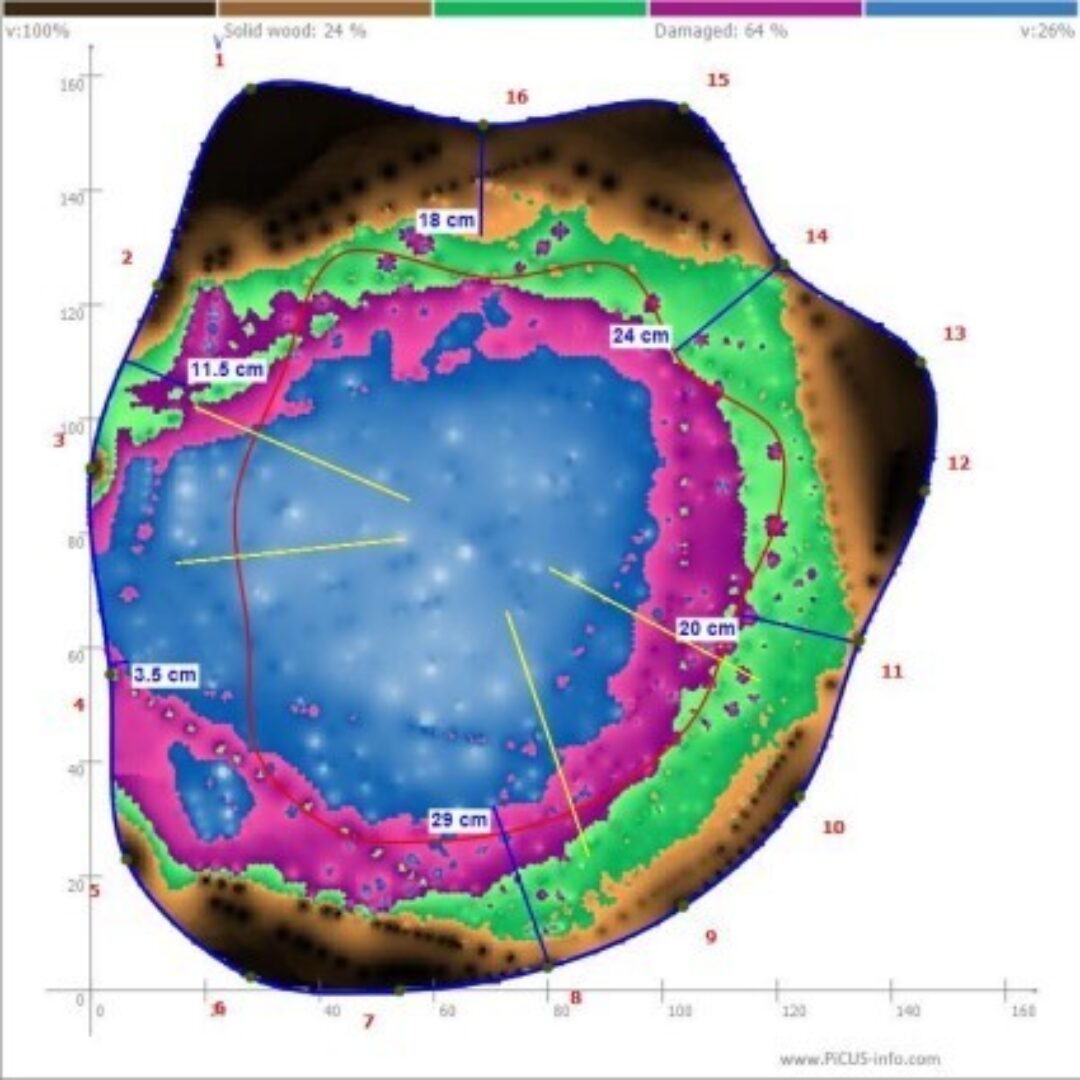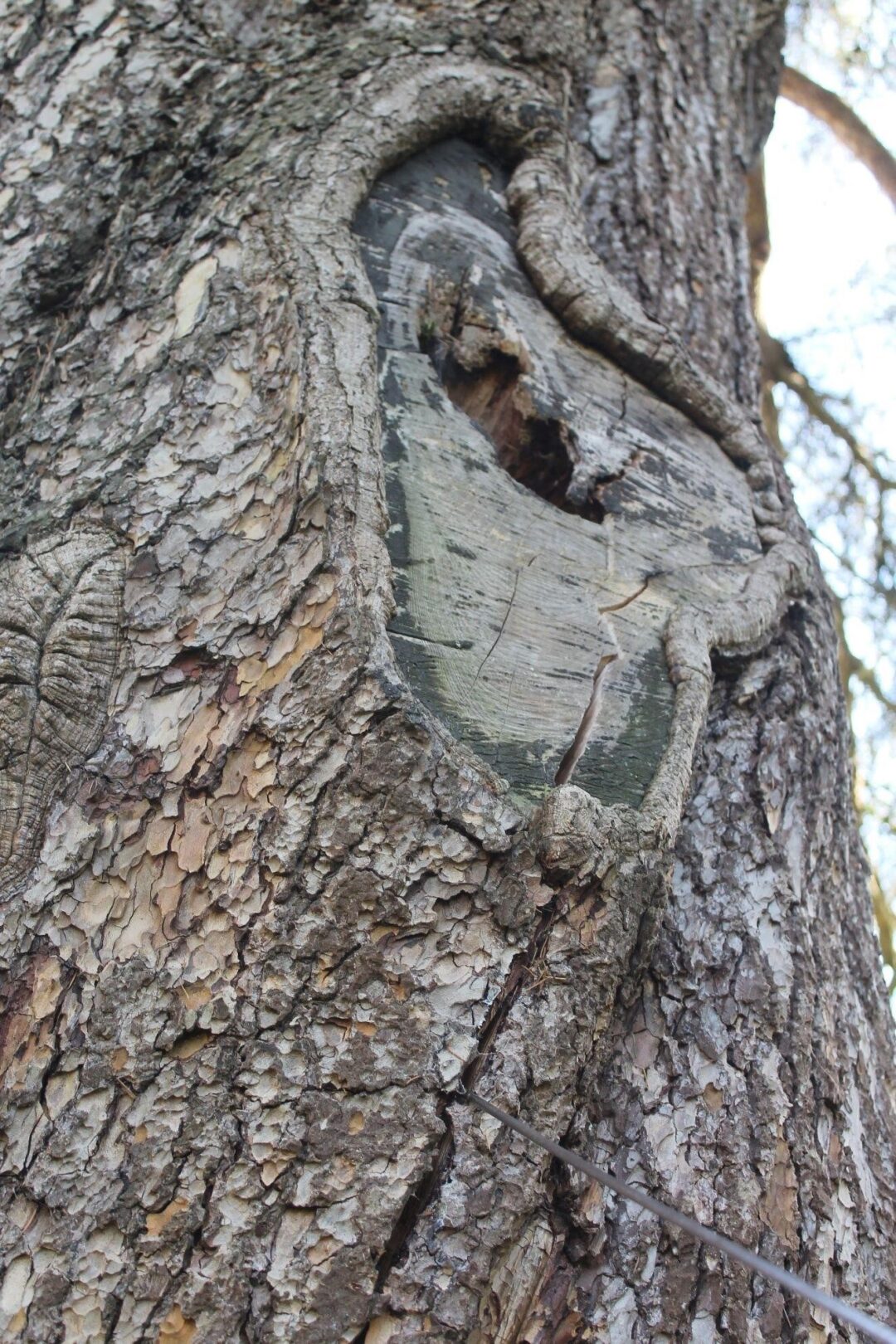The cedar tree on the east side of the daisy steps is Cedrus libani, or commonly known as Cedar of Lebanon. It stands at about 16 metres high and is thought to have been planted during the Portman era.
It is one of our very special trees at Hestercombe and we like to do everything in our power to look after and protect it.
Every year Hestercombe has a tree inspection. Although many of our team have fantastic knowledge of trees, we outsource this job to a professional so that the trees are seen with fresh eyes. The team’s job is then to be the day to day eyes on the ground - or in this case in the canopy too! The tree inspection will cover all of our older more veteran trees to protect them and extend their lives for as long as possible. It also looks at any trees that are near paths, and therefore people, to make sure that we keep visitors safe.
The Cedar is one of our favourite trees. It looks solid and healthy, but it does have a lean, and so carries a lot of weight on one side. We wanted to just check that the tree's timber was good and strong so last year we commissioned some extra examinations to be sure.

The extra check started with a sounding mallet. This is a small mallet made of nylon. It is used to tap around the tree so that the tree inspector can listen to the acoustics given off by the tree's trunk. The user listens for changes in sound to see if they can detect areas where it might be hollow, or areas where it might be softer.
Alongside this technique, two bits of tech were used, a PiCUS and a Resistograph.
The PiCUS is a sonic tomograph and is a bit like an ultrasound. It is a non-invasive method of determining decay in trees. Several nails are put at points around the circumference of the tree and are attached to sensors that ‘talk’ to a computer.

Sound waves are passed through the trunk to create a tomogram which shows the consistency of wood throughout the tree and will show any signs of decay.
The second bit of tech is a Resistograph. This is basically like a hand held drill but it uses a long, needle thin part to drill into the trunk. This makes a graph that will measure the resistance of the wood that it is being drilled into.
It is important to understand that a hollow tree can still be a healthy tree worth retaining, both these apparatus will aid in a decision for future care of the tree and will provide us with reassurance that the tree still has suitable remaining wood for its preservation and safety.
The findings from this report showed that most of the interior of the tree was hollow and decayed.

There was also the start of a crack forming and a decision was made to monitor the tree.
Recently we have had the experts back to re-examine the tree as part of its monitoring programme. Unfortunately the crack has grown significantly during this time. The position of the crack, with the weight of the timber, plus the lean on the tree, means that it is likely that the tree will fail in the near future, causing a great risk to visitors and staff.

No one wants to lose a tree of this stature and history - let alone wildlife value, but after much discussion it has been decided that the tree must be dismantled.
With most varieties of tree there is an option to reduce the crown of the tree to reduce the weight of the crown and perhaps prolong the life of the tree. Unfortunately Cedars carry all their branches at the top of the tree so thinning the crown makes an ugly tree, but also doesn't help to stabilise it or spread the weight. We will instead aim to make a monolith from the trunk so that it still holds a value to wildlife. And of course it gives us an opportunity to plant a replacement for future generations to enjoy. It will be sad to say goodbye to such a prominent part of Hestercombe’s history.